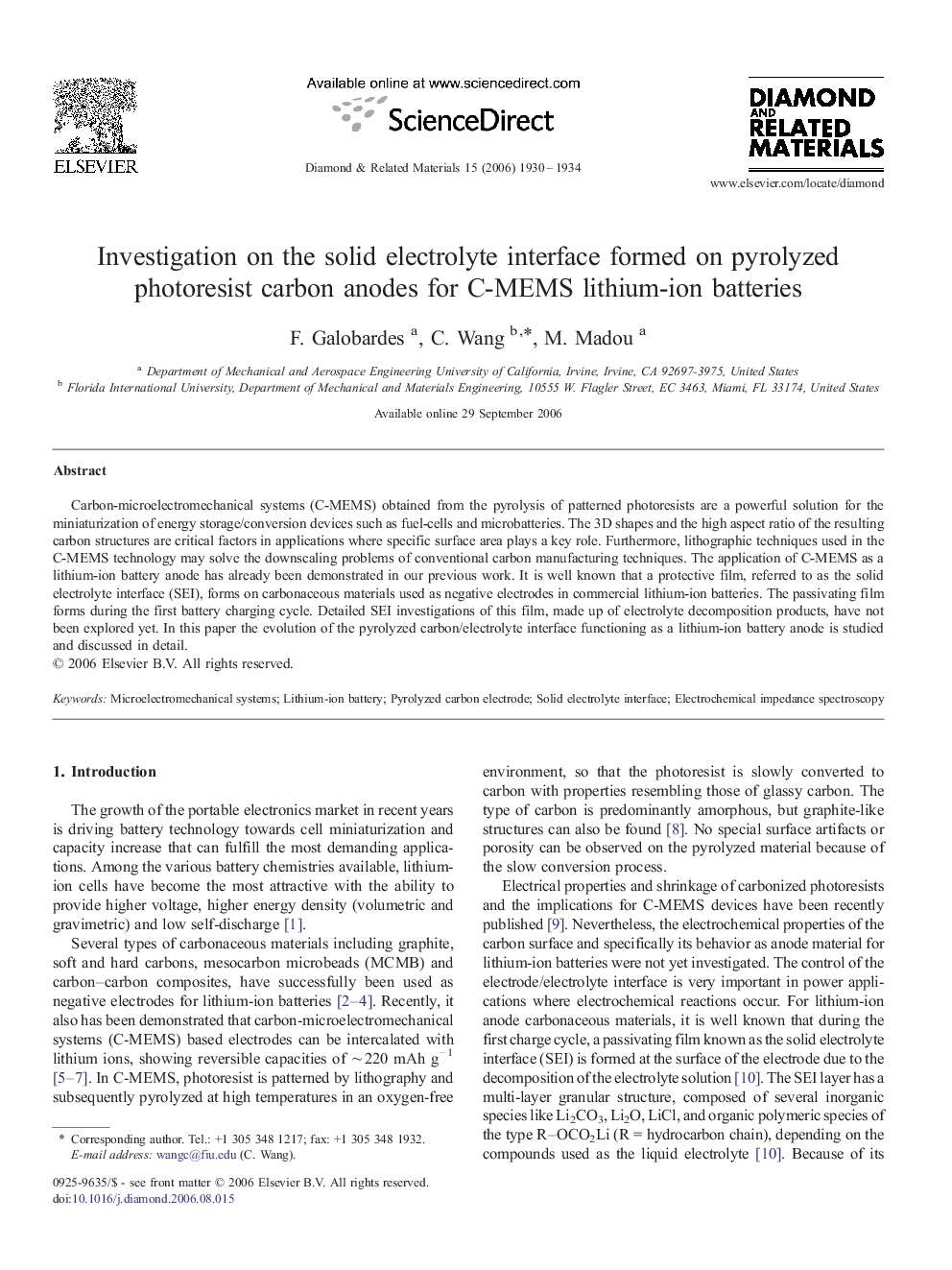| Article ID | Journal | Published Year | Pages | File Type |
|---|---|---|---|---|
| 701387 | Diamond and Related Materials | 2006 | 5 Pages |
Carbon-microelectromechanical systems (C-MEMS) obtained from the pyrolysis of patterned photoresists are a powerful solution for the miniaturization of energy storage/conversion devices such as fuel-cells and microbatteries. The 3D shapes and the high aspect ratio of the resulting carbon structures are critical factors in applications where specific surface area plays a key role. Furthermore, lithographic techniques used in the C-MEMS technology may solve the downscaling problems of conventional carbon manufacturing techniques. The application of C-MEMS as a lithium-ion battery anode has already been demonstrated in our previous work. It is well known that a protective film, referred to as the solid electrolyte interface (SEI), forms on carbonaceous materials used as negative electrodes in commercial lithium-ion batteries. The passivating film forms during the first battery charging cycle. Detailed SEI investigations of this film, made up of electrolyte decomposition products, have not been explored yet. In this paper the evolution of the pyrolyzed carbon/electrolyte interface functioning as a lithium-ion battery anode is studied and discussed in detail.
